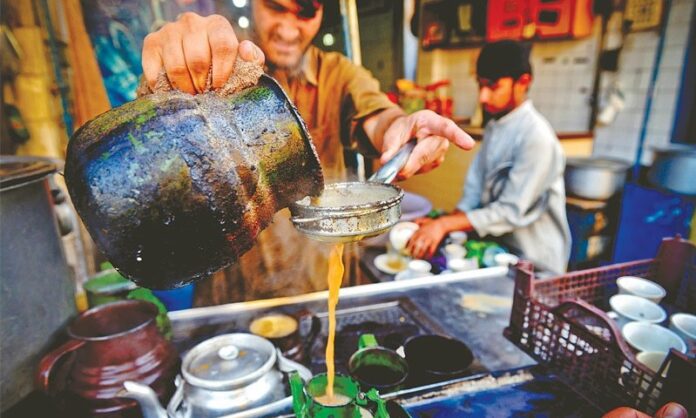LAHORE: The price of tea in the country is continuing on its upward march, with what was once an affordable and innocent habit quickly turning into an unaffordable luxury, with Dawn reporting that the price of a single cup of tea has gone up to Rs 60 in Rawalpindi from Rs 50.
This is the third significant increase in the price of a cup of tea in the past 18 months. The first increase in the cost of a cup of tea was in the last months of 2021 when the cost was raised from Rs30 to Rs40. The second raise from Rs40 to Rs50 took place in the mid of 2022 and the latest increase came about just after Eidul Fitr.
This consistent increase in the price of a cup of tea comes from a combination of elements that have to do with inflationary trends, the existing import restrictions in the country, and our failing agricultural system. A single cup of tea is made from tea leaves or patti, milk, and sugar.
In a recent report, Profit calculated how if a person consumes three cups a day, every day, the number multiplies to Rs4,500 a month. Now, with prices at Rs 60 per cup, it will cost an additional Rs5,400 a month.
So what is the story? Right before Ramazan the price of black tea (loose) had swelled to Rs1,600 per kg from Rs1,100 thanks to curbs being put on imports in the country. So why did prices of tea skyrocket by more than Rs 500 per Kg and are expected to continue to be affected by inflation after Ramzan?
Pakistan, unfortunately, barely grows any of its own tea and is in fact the world’s largest importer of tea spending $596 million on it last year. Meanwhile, India produces 0.94m tons of tea a year, consuming 70% of it domestically.
At the time of partition, India was producing a total crop of 600 million pounds annually, nearly half of which was being exported to England. Now, up until 1971 a lot of the domestic tea consumption in Pakistan was met by tea farmers in East Pakistan. However, with the independence of Bangladesh Pakistan was suddenly a country that grew tea nowhere, but had a population that was hooked on the hot drink. So what did they do?
Pakistan simply started importing tea from India and Sri Lanka. The substance was cheap and not a major strain on the import bill. The first attempt to grow tea was made in 1982, when Chinese experts reported the hilly terrain of Mansehra would be ideal for tea-gardens. Since then, however, progress has been slow and in the past decade down-right regressive. Tea was first planted in Mansehra in 1986, and then in 2001 in Swat both by the government and private companies. At its peak, Pakistan was growing tea on nearly 900ha.
However, currently this is limited to an area of 100 ha under Unilever Brother Support in Mansehra. The issues have been typical. In the initial days, the government was providing support like free nursery plants to encourage growth. As soon as the schemes ended, interest died out too.
This has been the main driver of tea prices going up. Meanwhile, increased prices of milk and sugar because of inflationary pressures and shrinkflation have also contributed to the rising prices of this once everyday pleasure. There has been an increase in sugar from Rs90 per kilogramme to Rs130 per kg, the price of gas cylinders increased to Rs4,500, tea from Rs1,500 to Rs2,100 and milk from Rs150 kg to Rs200 per kg.
As import restrictions continue to be strict with no hope of local production anytime soon and inflation at an all time high, the price of a single cup of tea will only continue to go up.




